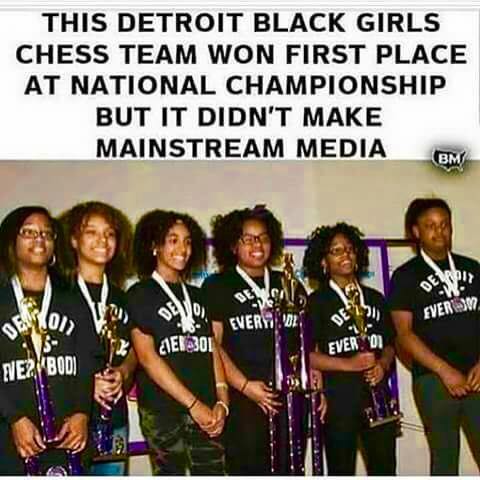
I worked with school chess clubs for about 15 years.
For many of those years, I would spend almost every lunch hour eating in my room, being an adult presence while the kids played chess. And very often I played too.
But the chess players were always looked at a little condescendingly by the student body in general. There was this nerd reputation, you see. The stereotype wasn't always true, but it always endured. In the early days especially, my championship team included players from the football team.
Very few of my players were female. I can think of two over the course of many years. One was a very bright scholar and an excellent player. The other was also bright but just not quite at the same exceptional level in either scholarship or chess, which is not to demean her in the slightest for she was a bright, intelligent young lady. She was also beautiful and a gold medal, provincial calibre track athlete.
I do not recall one single female player on any of the teams that we played against. Not one. Not in all of those years.
So, I am very impressed that the Detroit school, above, found at least 5 young ladies to play the game and, quite obviously, to play it well enough to win a national championship. And congratulations to the school and mentors who were able to make the game at least somewhat cool and attractive and to also teach the game so well.
In addition to the composition of the team, that's another thing that impresses me — that they had to have been well coached. In my experience I found that mostly the kids just wanted to play (nothing wrong with that) and not be bothered with any instruction. Although I don't suppose that I had the credentials to do much coaching, particularly in the early days.
Note: the title, e4, is the notation for what is most often the first move in chess.














































